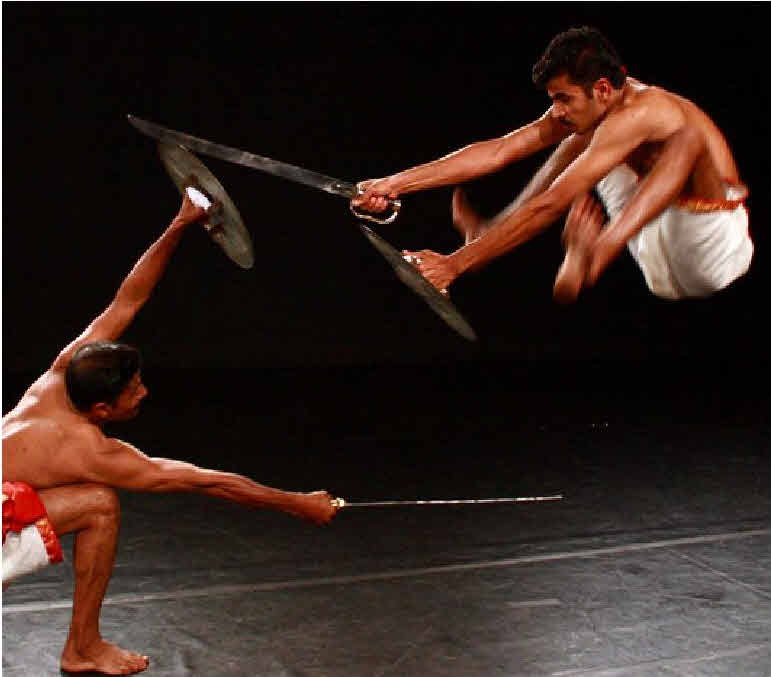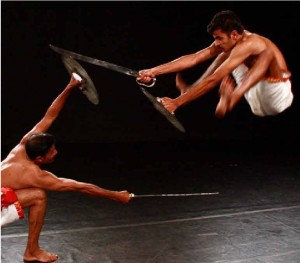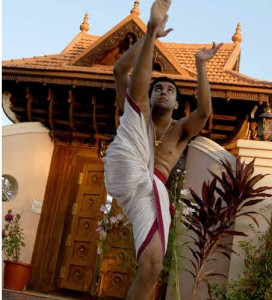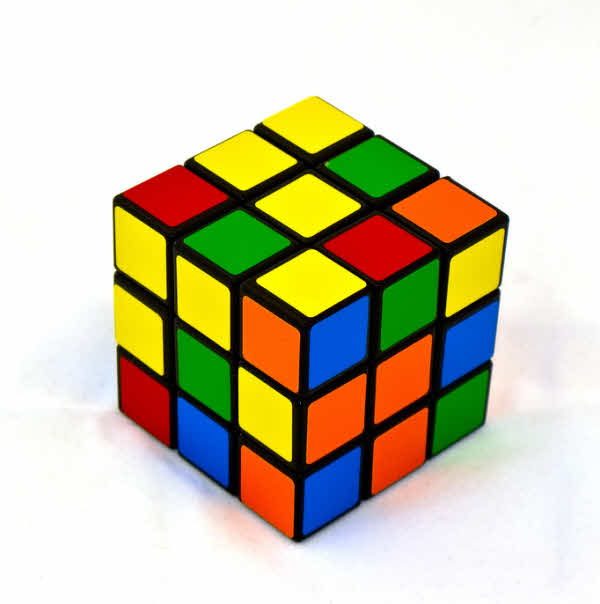by Varsha Sreenivasan
[box]India has for many years been known as the land that discovered many things, the land of many firsts. Did you know that India is also the the land which gave the world the mother of all martial arts – Kalaripayattu? Varsha Sreenivasan tells you more about this martial art that is India’s pride.[/box]The land that discovered zero, the digit the world cannot do without. The land that developed the most sophisticated science of medicine. The land that nurtured and developed indigenous cultures to mind-boggling dimensions. India or Bharatvarsh is known for all these and more. Yet, it amazes me to no end when I come across yet another aspect of this country we call our own, that I hadn’t known before. For instance, that India is also the land which gave the world the mother of all martial arts – Kalaripayattu.
If you’re wondering how it is the mother of all martial arts, it has been noted that Kung Fu, Chinese Shaolin and all related martial arts which have ancient origins are all derived from Kalaripayattu and that Indian masters who travelled to these far-off lands were the first martial teachers.
Kalari refers to an arena of specific dimensions and payattu refers to the art that is practiced. Foot-hand co-ordination, supreme flexibility, dexterity, strength and balance characterise the art of Kalari. Art it is, irrespective of the fact that it is martial in nature, for the sheer pleasure it gives to one who has the fortune of watching the practice sessions. Sweeping dance like movements, smooth pivots in mid-air, cat-like agility are all hallmarks of this martial tradition. In fact, traditional Indian dances like Bharatanatyam have also derived from this art and to this day, dancers with a knowledge of Kalari are known to have an edge over their counterparts.
Yet, all was never rosy for the masters of this lineage. Like the country of its origin, the art went through several periods of deep turmoil. From the time of its origins prior to the middle ages and its development as an advanced system of warfare between Dravidian Kings to its decline during the British invasion and colonial rule of India, Kalari has come a long way. And all thanks to the undying spirit of the practitioners and masters of this lineage, who in spite of several adversities including the British banning of any form of martial practice, have kept the tradition alive teaching their offsprings and all those students brave enough to resist the shackling chains of a regime that could defeat the courageous warriors only with the use of gun-power.
But, that is not all Kalari masters deserve credit for. Along with the art of offence and defense, they have also perfected and preserved probably the most advanced system of medicine and treatment known to mankind. For, how else can one describe a medical practice that without an X-ray or MRI, blood test or intruding scope, can tell accurately and better, the state of one’s skeletal, muscular, nervous and organ systems? This medicare system known as Marma Chikitsa or Marma treatment to this day is preferred by those who know of its existence as well as by those who prefer the holistic treatment and cure of their ailments from just one doctor, to the rigours of frequenting several specialists and departments at a major hospital.
There are certain vital points in the human body called ‘Marmas’, which if hit can cause disability or even death. It involves systematic application of pressure and therapeutic massage with herbal preparations and medicinal oils to stimulate complete health and fitness. The treatment also improves muscle tone, flexibility, strength, balance and can also cure orthopedic injuries and nerve related problems. Only devoted and faithful disciples are taught about them and their positions.
How did they perfect this art of medical care? Like most discoveries and inventions, necessity was the mother here too. Practising and training in Kalari requires the use of sticks, swords, shields, daggers, spears, clubs, you name it. To attend to any injuries in the process, it was imperative for the masters to come up with an all-encompassing system of treatment and cure to ensure the well-being of the generations that would keep the tradition alive.
Though practised mostly in the state of Kerala, Kalari masters have spread out across the country, not just crossing boundaries of states but religions and communities as well. It is not unusual to find them teaching ancient methods of fitness to our fast-food generation, in a manner that gives better and more lasting returns than a gym or aerobics class can ever hope to achieve. It is not unusual to find a student of Kalari who has the supreme balance of mind-body fitness and discipline.
But it sure is surprising to see the trend of foreigners queuing up to learn and perfect the most advanced martial art and combat system most Indians are ignorant of. Since the theme this month is ‘India Decoded,’ let me end with the coding considered most Indian and most ancient – our shastras.
Harinaapi Harenaapi Brahmaapi Surairapi|
lalata likhitha rekha parimaarshtum nasakyathe||
– which means:
Even if the Supreme Nurturer Lord Vishnu wishes,
even if the Lord of Lords Shiva wishes, even if the
Supreme Creator Lord Brahma wishes, even if the
crores of Gods wish; the Destiny of an entity
cannot be altered even a bit.
If it has survived through the ages of intense stress and upheaval, it will survive through this age of sedantary and unhealthy lifestyles too . To me, Kalaripayattu, born from India’s womb and rooted firmly in Indian soil, looks set to take on the world, destined to outlive yet another generation all over again.
Pics courtesy :
Indian School of Martial Arts http://www.kalari.in
Varsha Sreenivasan is an ex-media professional currently involved in the field of filmmaking. She prefers to describe herself as a student of Nature like everyone else is. She believes, as such a student, she is still learning. She dabbles in juvenlie poetry and prefers rhyme to reason.
[facebook]Share[/facebook] [retweet]Tweet[/retweet]
[button link=”https://sparkthemagazine.com/wp-content/uploads/2011/08/Spark-August-2011.pdf” newwindow=”yes”] Click here to download the August 2011 issue as a PDF[/button] [button link=”http://issuu.com/sparkeditor/docs/spark-august-2011?mode=embed&layout=http%3A%2F%2Fskin.issuu.com%2Fv%2Fcolor%2Flayout.xml&backgroundColor=000000&showFlipBtn=true” color=”green” newwindow=”yes”] Click here to read the August 2011 issue like a magazine[/button]









